Integrating the physical and the psychological
When Einstein introduced the concept of “four-dimensional space-time” at the beginning of the 20th century, the laws of motion and universal gravitation Newton had elucidated two centuries before were shattered. Not only, as Einstein’s special theory of relativity asserts, the dimension of time and the three dimensions of space (length, width and depth) were now seen as relative to each other – time slows down when speed increases – but, when complemented by the general theory of relativity, space-time was said to be curved! And this curvature of space-time is what we had mistaken for a force attracting a body towards the centre of all celestial bodies. Then, quantum mechanics came up against the problem of measurement, which asserts that it is impossible to cognise energy waves as the very act of measurement disturbs them, so that we can only ever grasp their “disturbed” state. Having had hardly any time to celebrate their discoveries, Western physicists, who rely heavily on measurement in their research, were facing a wall. They had lost the tool required to investigate a world from the only standpoint they knew: quantity. Frustrated by the West’s ontological mode of thinking, some of the physicists involved in the research began to ask questions about alternative ways of thinking in traditional Asian cultures – both Indian and Chinese.
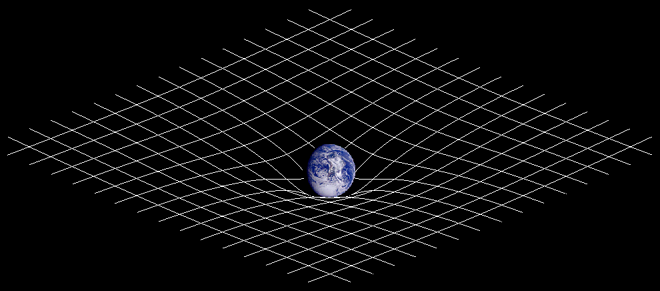
Japanese philosopher Yuasa Yasuo’s encounter with contemporary physicists

With a background in Zen and Yoga, Yuasa Yasuo (1925-2005) is regarded as a “provocative and far-reaching” scholar and philosopher, best known in the West for his study of the body as conceived in East Asia, with a particular focus on ki-energy (Ch. qi-energy). Though qi-energy is a concept with a clear Chinese origin in the Yijing, a similar concept – prana – had existed in India. When Buddhism entered China, it quickly integrated a dynamic worldview that soon lost its Daoist association to become the mainstream worldview in the whole of East Asia. Research on qi-energy also led Yuasa to study 20th century Western scientists in depth psychology and micro-physics. As a few of these had become interested in Asian views, he turned to these pioneers as his starting point. Thinkers in the East have an even greater need than us in the West, to integrate the new sciences and technologies that have flooded their countries for over a century, with their own traditional worldviews dating back millennia.
Yuasa’s first port of call was the psychiatrist and psychoanalyst Carl Jung (1875-1961), whose essay “Yijing and the Contemporary Period” he had translated in the 1950s. In this essay, Jung stated that “the principle of synchronicity is presupposed by the Yijing.” Feeling that Jung had not adequately understood this, Yuasa became interested in synchronicity, a little known aspect of Jung’s field of research. Another essay – “Synchronicity: An Acausal Connecting Principle” was included in a work co-authored by Wolfgang Pauli (1900-1950), a theoretical physicist.
In 1984, in cooperation with Culture-France, Yuasa organised an international conference at Tsukuba University on the theme “Scientific Technology and the Spiritual World,” to which he invited a number of scholars from diverse disciplines, including contemporary physics and natural sciences, Jung’s theories of the unconscious and synchronicity, and more generally paranormal phenomena. Out of necessity, as he was preparing for the conference, Yuasa had to study contemporary developments in physics, and was able to interact with, among others, David Bohm and Brian Josephson, both professors of micro-physics. As part of that conference, Yuasa himself did a presentation on ki-energy. Yuasa later set up a programme of exchanges between China and Japan on the topic of ki-energy in human sciences. Some of the many essays Yuasa wrote in the context of these exchanges have been brought together in Overcoming Modernity – Synchronicity and Image-Thinking, where the views of a number of contemporary physicists are presented, with a focus on their affinities with Asian views.
Carl Jung – synchronicity as evidence that the collective unconscious is beyond space-time
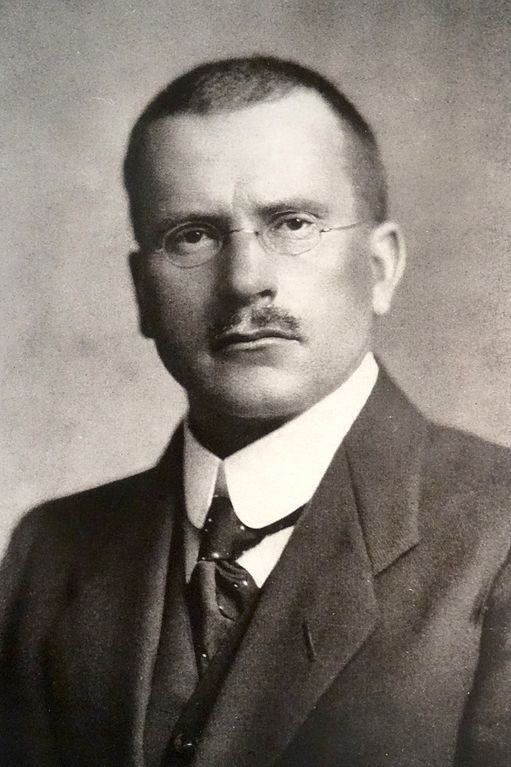
Yuasa explains that Jung had contacted Wolfgang Pauli, a physicist with a Nobel Prize, during the course of his research on synchronicity, which he also refers to as “meaningful coincidence.” For example, suppose when I am thinking in my mind of a certain friend, this person happens to visit me … Of these two events, one is a psychological fact, while the other is a physical fact … We can state that the experience of this nature involves the coincidence of … an internal event and an external event.” The issue to be tackled here is that of the overlap between the physical and the psychological, the issue of telepathy, and other paranormal phenomena. In traditional Eastern cultures, there was an “integration of the psychological and the physical,” in the West, the worlds of spirit and matter are two separate worlds.
Pauli was a colleague of Jung at the Swiss Federal Institute of Technology in Zurich. “The problem Jung consulted Pauli about was the surprising suggestion of “docking” Einstein’s “four-dimensional space-time” with his idea of the collective unconscious. That is, behind space-time that can be physically measured exists the unconscious network that spreads out in one inseparable region, connecting the mind of each individual … Here, nature is not simply a material substance, but comes to be grasped as “living nature” – that immanently houses the unconscious (the mind) and life activity. Paranormal phenomena such as telepathy are generated, based on the network of the collective unconscious that exists latently behind the activity of physical space-time.” In other words, according to Jung, synchronicity, which is known to bypass the laws of time and space, is evidence that the network of relations involved in Jung’s collective unconscious is beyond Einstein’s space-time continuum, and therefore overlaps with the world of quantum mechanics.
Wolfgang Pauli – The problem of measurement/observation similarly faced by the psychoanalyst and the physicist
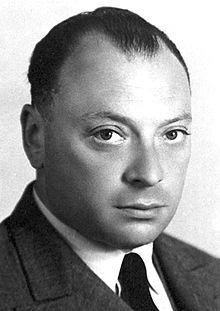
Pauli saw a parallel between the predicament of the psychoanalyst trying to help his/her patient bring their unconscious to consciousness, and that of the physicist trying to cognise the quantum world of particles and waves. In contemporary physics, this is known as the problem of measurement. “When we measure a micro-phenomenon such as an elementary particle, that act of measurement itself generates a disturbance in the state of the object. If light is applied to an elementary particle, its state is disturbed. The physicist can only cognize the disturbed state … This is the same situation as when the psychologist cognizes the unconscious.” By definition, to know the unconscious, one needs to bring it to consciousness, so one can never know how it influenced consciousness when it was still unconscious. “Therefore, Pauli says that the phenomena of depth psychology and the phenomena of micro-physics are similar in regards to the fundamental nature of their method of cognition.”
I would add that this corresponds to what Nagarjuna had referred to with his notion of svabhava – a conceptual superimposition, as something that is automatically projected onto a world of objects that actually lack it. It is “a cognitive default, an addition that the mind unwittingly makes when trying to make sense of the world.” The “things” we see do not really exist in the way they appear to exist.
For Pauli, and Yuasa, the issue is that mistaking the conceptual layer superimposed on reality for reality itself reduces it to a substantial entity existing independently of our consciousness, so this view cuts off its psychological dimension, and with it, life itself. “The sharp demarcation between the physical and the psychological is a consequence of the conscious intellectual judgment and does not mean that nature itself contains such a distinction.” This would mean that the world beyond space-time is not just a world of physical waves of energy, it is also a living world of psychological unconscious traces, not unlike the karmic seeds found in Yogacara’s unconscious repository consciousness (alaya-vijnana). The energy of that world is not just physical, it is also that which sustains the feelings and emotions that shape the way we see the world and, consequently, the way we live.
Pauli also claimed that “the unconscious cannot be lodged as an issue of psychology, but must be connected to the way of thinking of the natural sciences in general that deal with life (e.g., medicine or biology).”
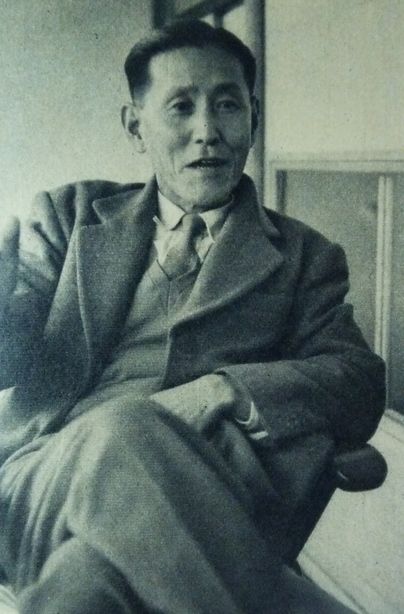
Though there is no mention of it in the essays selected for the book, I am sure Yuasa was aware of Imanishi Kinji’s research in biology and primatology whereby he worked out a “theory of evolution with subjectivity.” Rejecting the key roles given in neo-Darwinism to random mutations and natural selection, Imanishi insisted that the prime mover of speciation was a mind-like subjective activity shared by all living things. For a full presentation on Imanishi, see https://buddhism-thewayofemptiness.blog.nomagic.uk/imanishi-a-buddhist-view-of-evolution/
That a micro-physicist like Pauli took an interest in Jung’s collective unconscious, and called for an integration of the physical and the psychological was quite extraordinary. It meant that, following Einstein’s assertion that energy and matter were two aspects of the same phenomena (e=mc2) – which brought about a new view of a dynamic, rather than an ontological, universe – this dynamism was not to be thought about in merely physical terms. Instead, the universe was now tentatively seen as a living, and mindful universe, at least by a few researchers, namely, Pauli and Bohm (as well as Prigogine). Yuasa tells us that, whereas Pauli appears to have stopped there, David Bohm went further down that path “to think about what is on the other side of the observed state, that is, the state on the other side of the wall.”
David Bohm – the implicate order is “a holo-movement of a whirlpool of continuous energy.”
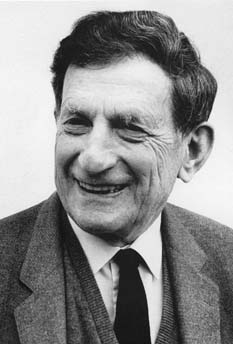
A professor of theoretical physics at the University of London, David Bohm (1917-1992), was also involved in quantum mechanics and, like Pauli, open to Eastern worldviews. When interviewed by Yuasa, Bohm confirmed that his theory of the implicate-explicate order had been to some extent suggested to him by conversations he had with Indian philosopher Krishnamurti, and that he had twice sought a meeting with the Dalai Lama to ask his opinion on this view.
Bohm stated that“the world has the dual structure of explicate-implicate order … Behind the microworld that we can measure there lies a hidden dimension. He calls this the “implicate order.” The implicate order is the order hidden from the observer, the realm of the invisible. In contrast, Bohm calls the dimension of experiences that we can measure, the “explicate order.” The explicate order is, so to speak, the order that appears to the observer. Bohm believes that beyond the order that can be cognized through measurement, there is a hidden order that is latent.”
Though this view may, at first, appear closer to the Greek supra-sensory world of metaphysics than to that of the formless Chinese Dao or Buddhist sunyata, Bohm also said that the implicate order was “a holo-movement of a whirlpool of continuous energy.” Yuasa points out that the holographic metaphor is similar to that of Indra’s Net used by the Buddhist Huayan school to describe its system of “mutual identity and interpenetration of all phenomena,” where “the part of a given phenomenon contains information concerning its whole. In this model, whatever part may be selected, the information concerning the whole will still be included. We may describe this as “part qua whole,” “one qua many,” or “one qua all.” As, in such a holographic model, “there is no longer any restriction of time and space insofar as communication of information is concerned,” it also integrates Einstein’s “four-dimensional space-time.” In terms of space, no distinction between parts and the whole, and in terms of time, no distinction between past, present and future.
Bohm also comes close to Jung’s depth psychology when he “states that the implicate order is the realm that becomes the common potential ground where consciousness (mind) is related to matter.” (“consciousness” here includes the unconcious). “There is a mutual, passive-active function between the domain of mind and the domain of matter… material energy and psychological information operate as one in the implicate order.” During the interview organised by Yuasa, Bohm explained that his system was also close to Chinese ideas concerning qi-energy, and suggested that Indian and Chinese methods of meditation aimed at reaching out to the subconscious implicate order.
Yuasa notes that “the point where Bohm’s idea differs from the majority of physicists is that he adopts the wave-model, rather than the particle-model, as a foundation of his theory in viewing nature.” The particle-model is part and parcel of the Western ontological mode of thinking, born in Greece and reinvented as epistemology by the likes of Descartes and … Newton, whose scientific views were challenged by the theory of relativity and quantum mechanics! “Bohm questioned this way of thinking.” Bohm is in fact remembered for a dispute he had with Werner Heisenberg who contended that it was not necessary to take into account the condition of the wave before measurement as this was “not experimentally verifiable.” Heisenberg’s position was that of the Copenhagen School, which holds “that it is meaningless to postulate anything that cannot be measured.”
Ilya Prigogine – Entropy and the “arrow of time”
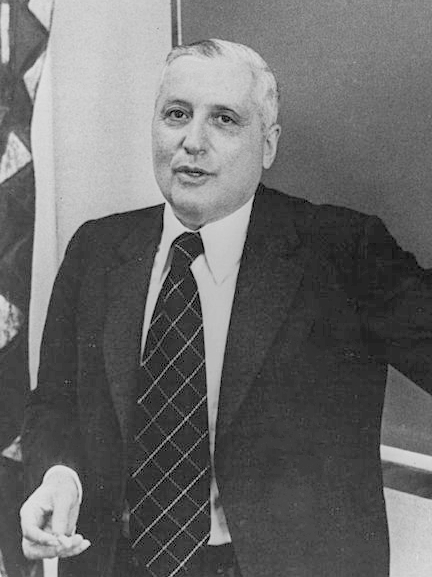
What had prompted both Pauli and Bohm to become interested in Eastern views of the universe was the problem of measurement they encountered in their research in quantum mechanics. Pauli focused on the process of cognition which does not capture reality as it is in itself, Bohm set out to try to access the reality “on the other side of the wall.” Both were open to Jung’s ideas about the unconscious, and saw it as the psychological aspect of the micro-physical world they were investigating – the place where “consciousness (mind) is related to matter.”
With Ilya Prigogine (1917-2003), we come to another set of issues associated with quantum mechanics, that which concerns the “symmetrical nature of time” held in contemporary physics. Prigogine disagreed with that assertion. The commonsense view is that “time flows unidirectionally, that is, it moves from the past to the future by way of the present.” It cannot alter its direction and flow from the future to the past. Contemporary physics rejected this popular “existential” view to assert that time is reversible. Yuasa recalls that when Prigogine came to Japan, he expressed an interest in the Chinese concept of time as developed in the Yijing and Daoism.
Yuasa explains that “there is in physics the law of increasing entropy. This law presupposes that the time flows only unidirectionally. Although it is a crude example, when I put cream in a coffee cup, the cream and the coffee are separate, but once I stir them, the resultant condition cannot be reversed. In other words, the theory of the increase of entropy states that the cosmos moves toward chaos as time transpires, although there is a definite order (kosmos) in natural phenomena.”
Originally developed in thermodynamics, the law of increasing entropy became “the fundamental law in the theory of energy,” which later came to cover electromagnetics and gravity-space, where the “symmetry of time” had also been applied. Prigogine contended that this was a “theoretical discrepancy.” The “arrow of time” does reflect the disintegration of our bodies as we age and die. But it is also the case that “the living organism immanently possesses a process that opposes this law.”
Prigogine’s theory – called the theory of fluctuations and dissipation,” states that “a new order is created out of chaos even under the law of the increase of entropy.” Prigogine holds that “nature creates order.” As Pauli and Bohm had done in the context of their dialogue with Jung, Prigogine expands “the system of physics and chemistry to cover the life-system all the way to social systems.” Again, in a language reminiscent of that of Imanishi, one can say that ”a living body grows to maturity as a fertilized egg shapes itself into a definite form. This is a process in which cosmos is generated out of chaos, which is the reverse process of the cosmos becoming chaotic. The process is contrary to the usual understanding of the law of entropy, which states that the cosmos ends up in chaos.”
In the Daodejing and Zhuangzi’s Twelve Chapters, the cosmos is said to be formed out of the Dao, that is, “chaos,” not in the sense of disorder, but in the sense of a formless invisible whole, out of which, due to the activity of qi-energy, issue the forms of the things we see.
Here, Yuasa introduces a term borrowed from the German philosopher Martin Heidegger, to show how close Prigogine’s view is to the view of Daoism. This is the word Zeitingen, which Yuasa translates as the “ripening of time.” Originally derived from Zeit, the German word for time, and zeitig, meaning “opportune” or “timely, Zeitingen has “the meaning of “to ripen,” “to mature,” and as a medical terminology is used with the meaning of “to inflame.“ “This time is a qualitative time that constantly changes its characteristics, and is not merely a physical time that is quantitative and possesses homogeneity.” Heidegger used the word zeitigen to describe “a process whereby the content of an event is ripened together with the [temporalization] of time.” In Chinese philosophy, this ripening of time is due to the activity of qi-energy. “Behind the order of nature exists an invisible region that is called Dao, out of which issues the activity of ki-energy. In other words, the order of myriad things is generated due to the activity of ki-energy out of chaos, which exists prior to that which is formed and accordingly the events undergo changes in movement.” Likewise, Prigogine’s concept of time “endows time with the characteristic of generating order in the natural world.”
The Concept of Time in the Yijing: Chairos
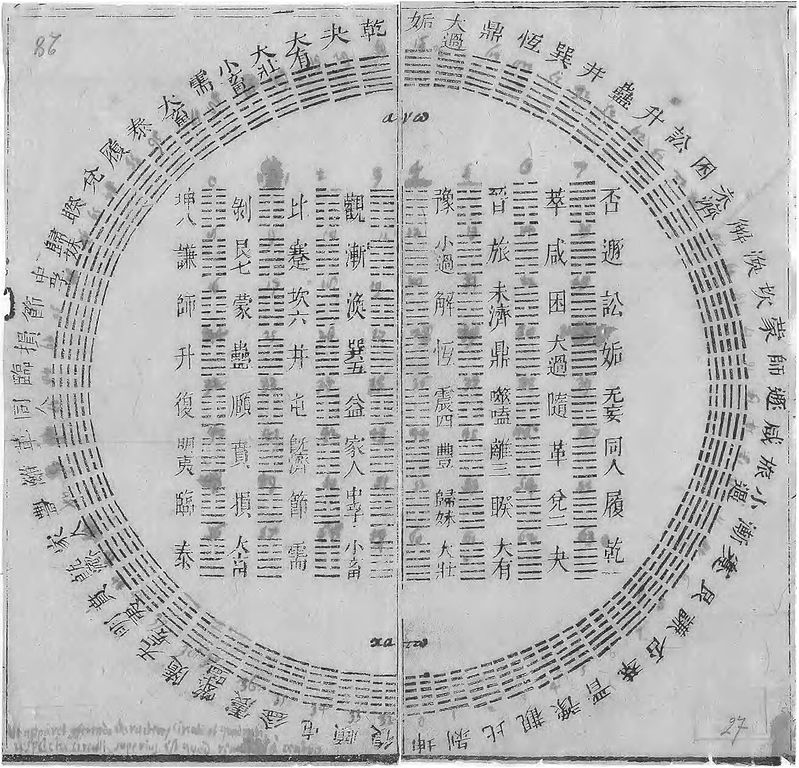
In the Yijing, time is not seen “as something objective, but as being endowed with definite characteristics such as “chance” and “timely” opportunity (opportunitum in Latin or chairos in Greek).” That a name existed for it in Greek and Latin shows that this way of relating to time was also known in the West, but there, it was pushed aside by the development of rationalism and science, which temporalised time in terms of quantity – that which can be measured, rather than in terms of concrete experience – living time.
“The essence of time that the human experiences is a situation in life. Time is always experienced for the human being as that which is originally endowed with the characteristic of chance (opportunitum) that arises in a situation …It is for this reason that the Yijing teaches the importance of knowing “time.” In short, time and space are always inseparable, and due to the activity of ripening time, the event-character is qualitatively in constant change.” The practice of divination rests on this relation to time in concrete life situations where decisions with ethical dimensions have to be made.
Divination does not so much predict the future than it seeks to grasp the present situation of a human being by intuiting what will happen if (s)he remains in that situation, with the same mindset, and way of relating to the world. It is therefore meant to advise the person on ethical changes to the way they are living in order to avoid disaster. Divination brings “the condition to a possible form for consciousness to cognize.” It does not, however, rely on past data “based on causality, as is done in science. The process is rather reversed, namely, that by intuiting the future one comes to know the present space-time.” And by knowing the present, one can follow a path of cultivation to see things as they really are, without bias, and make the right decisions.
Ki-energy: “a life-energy that has both physical and psychological characteristics.”
Following the conference he held in 1984, where he had met these physicists, Yuasa turned once again to the Asian traditional cultivation practices based on qi-energy training. In 1988, in cooperation with qigong masters from China, he held a symposium in Tokyo on the theme “Ki-energy and Human Sciences” focusing on somatic science with scholars of medicine, natural science and engineering. This in turn led to the foundation of Society for Mind-Body Science, to set up a programme of exchanges between China and Japan on that topic.
In a nutshell, “Ki-energy is conceived to be a life-energy that has both physical and psychological characteristics.” Ki-energy is that which integrates the physical and the psychological via the living.
Chinese traditional medicine is known for addressing the state of the patient, rather than focusing on the immediate cause of any particular ailment. “The fundamental principle of needle therapy used in traditional Chinese medicine lies in activating the circulation of ki-energy within the human body by infusing fresh ki-energy into the human body, while eliminating the stagnant and inferior flow of ki-energy.”
But ki-energy also flows through the natural environment. “External ki-energy connects the human body with the environment by means of the ki-energy flowing through the meridians. The psychological function at the unconscious level is connected to matter in a form charged by these characteristics. Ki-energy, as of now, is reported in terms of various properties, such as far-infrared rays, magnetic fields, and photons. But since they are carriers of information, when seen from the standpoint of psychology, the issue becomes an inquiry of what characteristics of psychological function are emitted, as they are, I think, charged by affective characteristics.” Yuasa calls for more research on the topic. But this will not be mere academic research. Ki-energy training encompasses three domains: mind training (meditation such as practiced in Zen), bodily training, and study of the relationship between the human body and the environment, what is referred to as the “external emission of ki-energy” by qigong masters. Though this is very much in line with the Eastern tradition of self-cultivation, Yuasa presents it as “a new view that has arisen in China to understand integratively the experience of the three dimensions of the mind, the body, and matter by means of the fundamental concept ki-energy.”
In the West, there is no shortage of authors that have written about the integration of the physical and the psychological. Fritjof Capra, with The Tao of Physics, may be one of the best known. Works by Western authors are undoubtedly very valuable, but more interesting for me are the views of a scholar whose very childhood was immersed in a characteristically Asian mode of thinking, having spontaneously used intuition when growing up, before training in Zen, Yoga and, in later life, qigong! I think that it is highly unlikely that the West will ever jettison its addiction to quantity to pursue quality. Even among the most talented, this is not happening. The Copenhagen School, which represents mainstream contemporary physics, still holds what Max Planck, who won the Nobel Prize in Physics for the discovery of energy quanta in 1918, is reported to have stated, namely, that “what cannot be measured is not real.” If any move is made in the direction of integrating the physical and the psychological, it will have to take place in the East.
For now, may I quote the two last paragraphs of the 6th and last chapter of the book, which I take to be the conclusions Yuasa arrived at:
“At the bottom of the mind’s experience of time exists latently the dimension of the unconscious. It transcends the sensory distance between individuals, but connects one person’s mind with another person’s mind in an invisible dimension. This is Jung’s collective unconscious. This is what we may call the system of a network of minds that spreads behind, in the background of the four-dimensional space-time the sensory perception grasps.
The unconscious region constantly changes its quality. It is always being transformed and moves toward a ripening, while issuing a potential energy from within its interior. This energy is great and is the power of [temporalizing] time. That the human being lives means that he or she always exists “here and now.” At the base of human existence is concealed the activity connected to the eternal cosmos that synthetizes the past and the future.”
Source
Yuasa Yasuo – Overcoming Modernity – Synchronicity and Image-Thinking (2008)
